Ghosts of Bexhill - a Haunted Guide
Article date: 07 August 2017
If there's something strange in your neighbourhood, who you gonna call? Not me, and not the police either, else you'll find yourself arrested for wasting police time! I'd love to be able to say, "I ain't afraid of no ghost," but frankly that's a bit of a lie.
Some of you may remember the controversial BBC ghost spoof Ghostwatch. I watched it when it aired in 1992 (I was about 13 years old) and I didn't sleep for about a week afterwards. So, forgive me when I say that although I find the subject of the supernatural fascinating, I haven't yet been tempted to lock myself in a haunted building for the night with only a cold turkey sandwich and a torch for company.
A number of years ago, local author Tina Lakin was kind enough to provide me with detailed information on sightings of ghosts in the Bexhill area. Using this material, writer Becky Kleanthous and I have produced the following article for your enjoyment. So, get your Proton Packs and cold turkey sandwiches at the ready and let's begin looking at Bexhill's most haunted areas...
In many towns and counties across England, the history is palpable. Exploring abbeys, climbing old stairwells and wobbling on cobbles can give even the most distracted traveller flashbacks to previous lives - not to mention previous deaths: you’ve almost certainly wandered through an old square which was once a site of rowdy public executions.
Bexhill-on-Sea, our bewitching home town, has a myriad of strange and spooky spots, with locals long whispering of the supernatural. In this guide to haunted Bexhill, learn about the fascinating past of 11 different locations in the area. You’ll be dying to visit them - but perhaps it’s best if you don’t.
Bexhill Railway Station
Opposite the railway station stands an uneasy crossroads, haunted by the memory of the foulest of deaths. These were the grounds for public executions during the 13th century, where convicts would be hung from the gallows for theft or murder - or almost any dubiously ‘proven’ crime.
After hangings, the corpses would dangle for days, a gruesome warning to others to follow the law, and not to allow themselves the same fate. The bodies would begin to decompose, and birds loved to peck the liquidised eyes and the putrified brains. It was such a reliable spot for a gull to source its lunch that they grew demanding and impatient, sometimes attacking a person in a noose whose neck had not even broken yet.
Unsurprisingly, there’s a chill in the air even 800 years later, and people have reported terrifying encounters in the area. If they are foolish enough to walk the area at night time, not only might they endure the screams of long-dead convicts, but they could even meet the keeper of the area. The keeper has been seen pacing the area from the station across to the churchyard in a hooded cloak. His duty was to keep the corpses in place - by any means necessary - until they would be buried in an unmarked grave. Not the sort of fellow you might care to meet after dark.
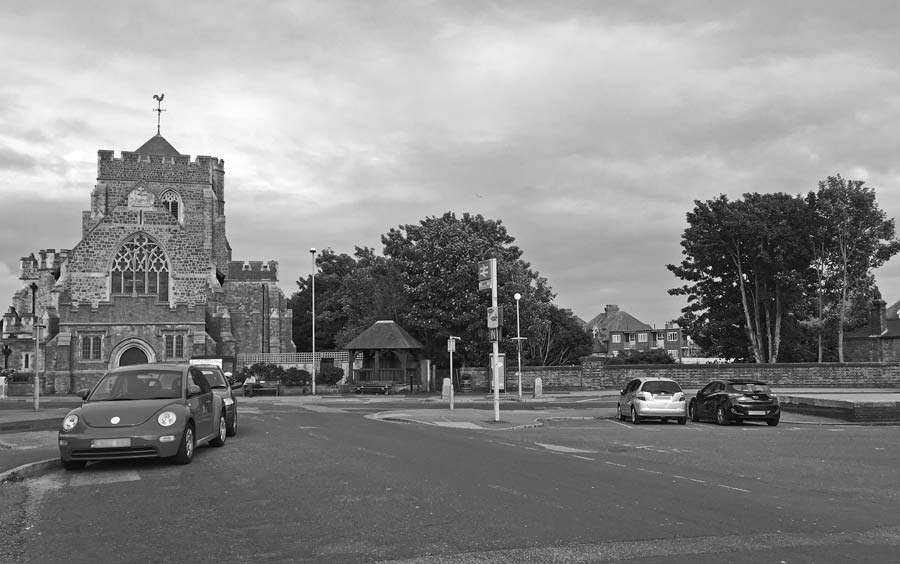
The Battle of Sidley Green
Sidley, steeped in history, rests at the outskirts of Bexhill. The New Inn of Sidley, once known as the Eight Bells during the 18th century, was a favourite haunt of smugglers working in the area.
During 1804, German soldiers were posted in Bexhill to defend against possible French invasion. Not all the locals worked in the spirit of things, however, and some were secretly profiteering from the conflict. The most infamous group of smugglers in the area was the Little Common Gang, and smuggling became something of a family business during the decades which followed.
It all came to a violent head, though, in 1828 at the Battle of Sidley Green. Dozens of men armed with wooden bats protected their illegal cargo as they brought it ashore. The coastal blockade attempted to stop them, but the bloodbath ended in death for its leader, Quartermaster Collins. Ten smugglers were sentenced to death as a result of the battle.
According to a man who lives in the village today, the scandalous skirmish is still replayed over and over again. On any still and quiet evening, the smugglers and the blockade take to the green to rehash their old conflicts. The witness describes the scene as so vivid and real that a passerby might believe it to be a historical reenactment. That is, of course, unless they were to hang about until the bitter end, when the crash and smash of wooden bats has turned to groaning bodies on bloodied grass, and the mortal enemies simply fade away into the ether.
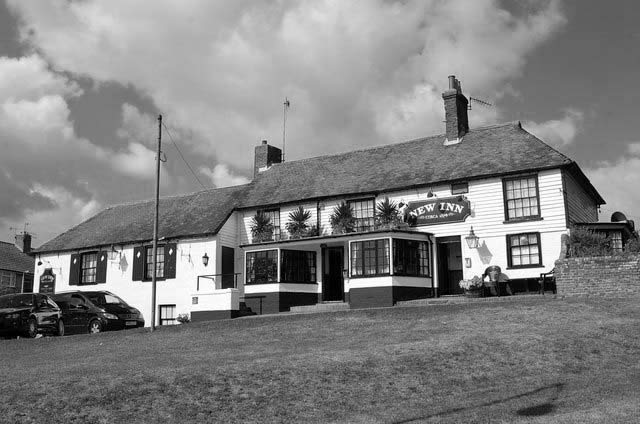
The New Inn of Sidley. Photo by Julian P Guffogg.
The Old Manor Barn Costume Museum
Many psychics operate through materials and objects; they ask clients to bring a photograph, an item of clothing or a treasured possession to provide a tangible path to converse with the dead. It’s no wonder, then, that entering the Manor Barn Costume Museum, just minutes from the old town, was described as being something like entering a graveyard.
Of course, a few years ago all items from the Costume Museum were moved to the main Bexhill Museum. But the grounds of the building itself still exist, now used as the BLODS (Bexhill Light Operatic and Dramatic Society) Hall.
Displays of childhood china dolls used to stare coldly into the eyes of any visitor, and there were hundreds of pieces of clothing, costume and lace from many bygone eras. Imagine the tussle of souls, all crammed together, on display to be gawped at by the general public.
Dresses and suits had been known to vanish overnight, only to reappear the following day without explanation. While a simple assumption would seem the most obvious, those items were not on loan, or sent for mending. There was no explanation, other than that the spirits who had reluctantly permitted their clothes to be preserved needed to borrow back their garments for a night, for a grand ghostly event.
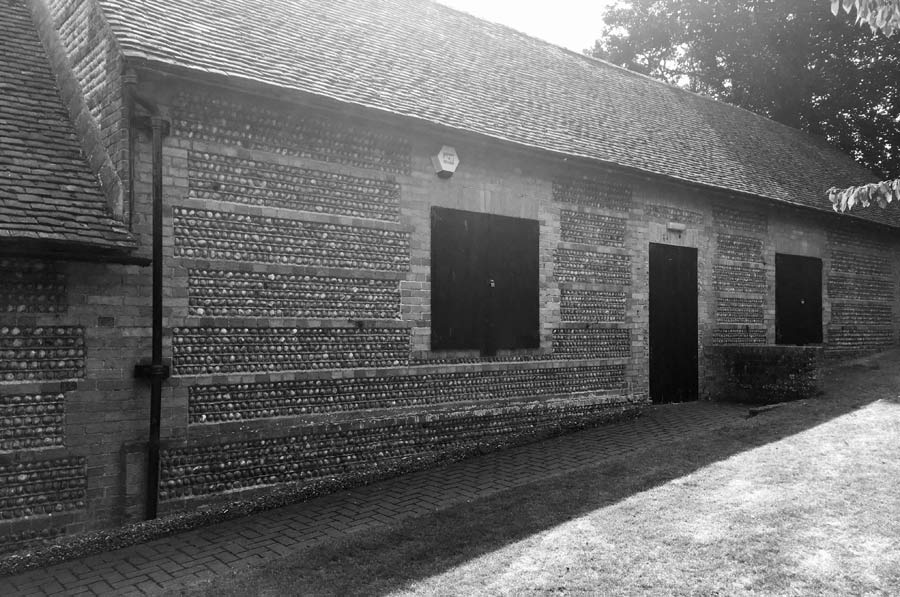
The De La Warr Pavilion
For anyone who doesn't know about the De La Warr Pavilion, it is the glass-fronted modernist building which has watched over Bexhill’s seafront for almost a century. It has an atmosphere of the uncanny, and not just from the almost-robotic design of its repetitive geometry, or its glassy reflection of the infinite ocean.
When built, the pavilion was intended as a celebration of luxury and leisure, with Earl De La Warr commissioning its design in the 1930s, and it finally opening in 1935. Joyously laying its plaque on opening day, he referred to it as a “crucible”.
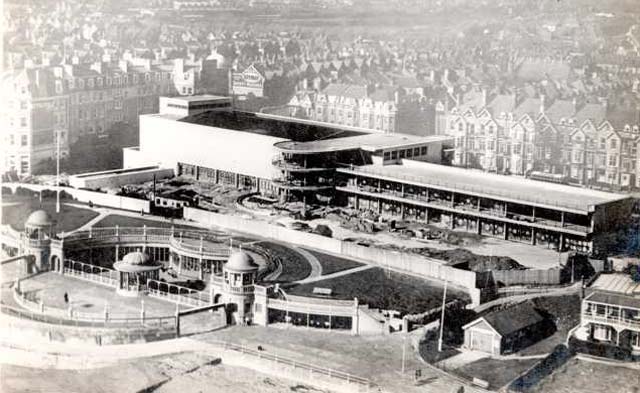
It quickly became apparent that the building was doomed. Not yet glittering in the sun for even a decade, holidaymakers were replaced with military personnel during World War 2, when it became a coastal defence base. Then later, German bombers struck, and the west wall was damaged when a bomb was dropped on the adjacent Hotel Metropole.
For many decades afterwards, the interior suffered through a lack of funding. Eventually, in 1986, the building was granted a Grade I listed building status and, in 2002, funding was granted by the Heritage Lottery Fund & the Arts Council to enable the pavilion to be resurrected to its former glory. It is now a venue for the arts, with music and emotion echoing in its halls.
Since the De La Warr Pavilion came to be built, people have begun to notice eerie visions in the area. But far from being a fearsome experience, the apparitions have been described as “gentle”. Something like dancing fairy lights far out at sea, one theory is that they are the souls of mermaids who have been drawn in closer by the songs of the theatre.
Something about the power of music stirs powerful emotion in even the farthest-off listener. Who knows how long it will be before the souls can no longer resist, and dance onto shore for a closer experience?
On the stage
The auditorium of the De La Warr Pavilion has been the scene of a number of ghost sightings over the years. The left-side of the stage (as seen from the audience) is said to be haunted by the ghost of Ira (pronounced Era) - a lady with tied-back hair, wearing a blue victorian-style dress and blue bonnet. First spotted by a technician in the eighties, further research has suggested she may be the spirit of a jilted lover who lived in the coastguard houses on the land that the De La Warr Pavilion was built. This lady was apparently bludgeoned over the head by her husband after she discovered he had been cheating on her. Ira has been sighted a number of times by audience members watching shows. She is sometimes seen as a blue haze, but other times has appeared in full dress, leading confused audience members to ask members of staff who she was.
Another spirit said to haunt the stage is of a ballerina who died of a heart attack during her on-stage performance. It has been known that on the anniversary of her death, a ballet shoe will appear on the stage (or under the stage) at the very spot she died. People have described a whirlwind feeling (as if someone is performing a pirouette) when walking over this spot.
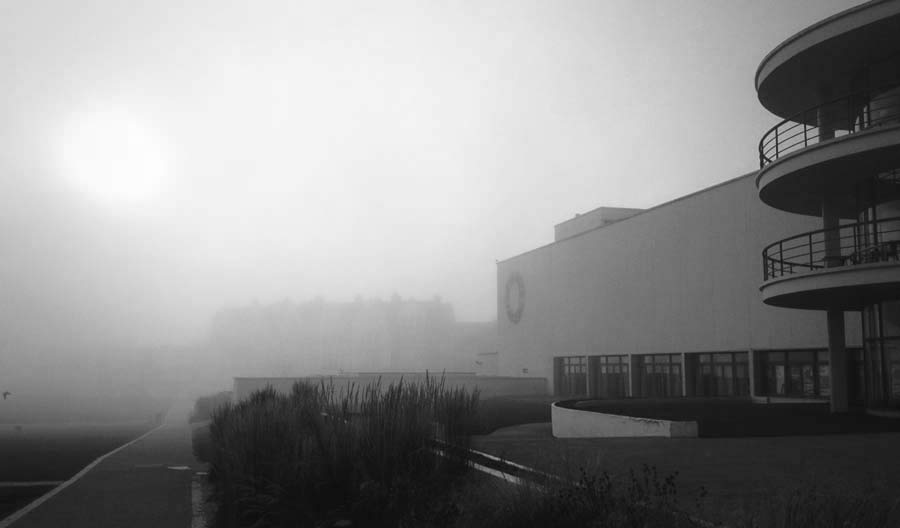
Phantom Gypsy Caravan
The Old Town area of Bexhill lies inland from the coast, and is studded with churches, historic buildings and the stunning Manor Gardens.
Nestled amongst the shops and timber-framed cottages of the Old Town, you will find Courteney's (Coffee and Cake), formerly The Bell Inn, which is said to be the site of an annual visit from a phantom gypsy caravan.
There are records suggesting that before 1817, a theatre occupied this site, and it still remained a favourite destination for performers and theatre-goers when it later became a travellers’ inn. Ornate caravans would pull in here to allow the horses and passengers to rest for the night on their way to a show. The visitors were intriguing, creative folk who believed in the magic of herbs, the influence of the moon and the significance of ancient traditions. At times, they were misunderstood by the public, who found them odd and suspicious. The visitors, though, treasured their travels and held fond feelings for the towns they visited.
Today, many people claim that the same colourfully decorated caravans appear during early May, clattering down the street and making their stops from beyond the grave.
Whether the modern-day locals are pleased to see them, or whether they remain suspicious of the travelling troupes, is not entirely clear.
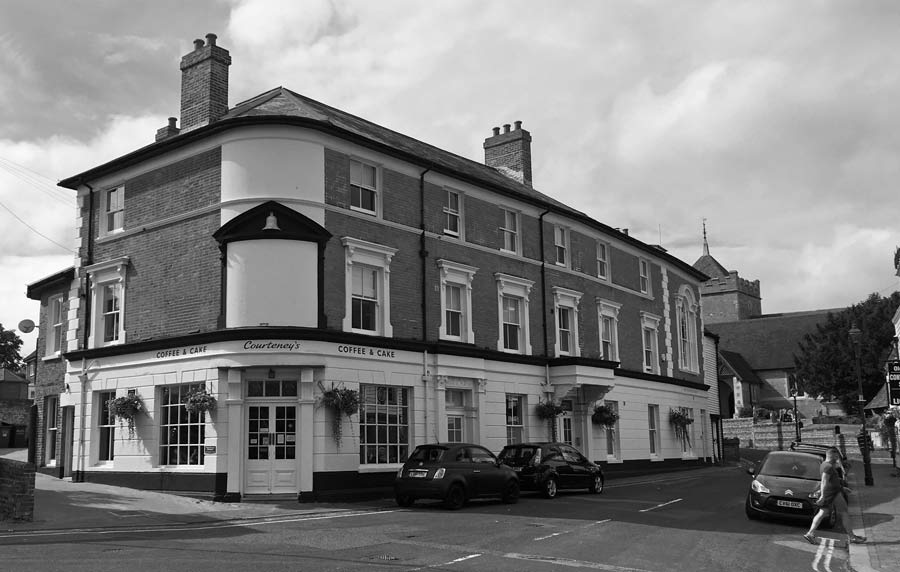
Egerton Park Theatre
Yet another theatre site, this was once an elegant open-air venue, in which actors would breathe their words into the cold air of the stage. The well-dressed audience would feel the chill of winter as they perched on the edge of their seats, perhaps holding icy hands with their fellow theatre-goers and loved ones.
Although the theatre was closed in 1989 to make way for a bowling pavilion, locals are often thrilled to see an immaculately-dressed Victorian couple strolling through the park grounds, only to vanish when they reach the old location of the open air theatre.
The Bijou Theatre in Bexhill
Anyone unsettled by clowns and ventriloquist dummies is also also likely to feel a shiver down their spine when they catch sight of a Punch and Judy show. The wooden, unchanging faces of the puppets are frozen in a gruesome grimace, with hunchback hooligan Punch wearing a jester hat. His voice is more of a squawk than speech, and the whole plot of the play focuses on his perpetuation of domestic violence in a household with a wife and baby. And this is all aimed at children! It’s creepy enough on any seaside pier, but this local story takes it a strange step further.
More than a hundred years ago, a married couple from Prague used to visit the Bijou Theatre in Bexhill every summer to perform their popular Punch and Judy show. Beloved by all, Bernade and Ewa Goldfriench even allowed the children themselves to take part in some of the puppetry. It was a special and magical experience for little hands and imaginations. Many, many years passed, always with Bernade and Ewa returning to put on their shows, animating the puppets with life and soul.
When an elderly Bernade passed away, Ewa was grief-stricken and never again returned to perform Punch and Judy. Still, with fondness in her heart, she kindly donated the little theatre and the wooden puppets to the Bijou Theatre so that they could still be used with the children.
As time passed, the popularity of Punch and Judy waned. Eventually, the sad puppets were boxed up and stored in a back-room of the theatre, gathering dust.
One night, however, in the 1940s, some theatre staff were clearing out the storage room. When they discovered the wooden puppets, they decided to set up the little theatre and even played around with the characters for a while. Returning to their work, unpacking and sorting, they were then surprised to see the puppets start back up again. Watching the magnificent show put on - by one of their colleagues, they presumed - was captivating. When they peered behind the theatre tent to see which clever person was controlling them, they were stunned to find that nobody was there.
Devastated to be separated by his death, and torn apart all over again by leaving the theatre life: was this Bernade and Ewa, having one last hurrah?
Peacock Feather Folklore: York Hall Theatre (126 Station Road)
Superstition is a serious business for many, and none more so than actors. In the world of theatre, something as small as the utterance of “Macbeth” has been blamed for grisly deaths backstage - and even worse - onstage.
The problem lies in the blurry boundaries of reality, much like the puppetry haunting; when a person’s whole life revolves around inhabiting another character or world in an utterly convincing way, what’s to stop that facade becoming reality? Speaking the everyday lines of a script forces an actor to possess a body. So speaking the lines of a spell or curse - something powerful and supernatural - is therefore extremely frightening. King James I was often truly petrified by the jinxes performed by ‘witches’ and ‘fairies’ onstage.
One wholly ominous symbol to an actor is a peacock feather. It represents the evil eye, and people who tread the boards often believe that it brings a curse to anyone receiving a peacock feather, or to anyone in the same building as one. Even false depictions are not considered safe… You’ll never see a peacock painted on the backdrop of a stage.
Legend has it that the manager of Bexhill’s York Hall Theatre was sent a bouquet at the turn of the 20th century, and it contained - you guessed it - peacock feathers. Up until this point, the theatre had been a bustling and joyful place, bringing in both locals and tourists with its exciting entertainment.
But on the day that the bouquet appeared (which is how it came about, as it seemingly emerged out of the blue with no known origin), everything changed. Almost as soon as the bouquet entered the foyer, a curse seemed to inhabit the building. Successful shows turned to dust, with ticket sales plummeting. People who worked in the theatre, and their loved ones, began taking ill. Desperation reigned and in the end, the theatre was sold.
It was bought to be converted into a cinema in 1935, which only stood for seven years before being bombed in World War 2. The empty carcass of the cinema remained for decades, until it was finally demolished in 1959. Some people say that after the demolition, amongst the dust and rubble lay a single peacock feather.
Ghostly Army at Glyne Gap
An eerie kind of no-man’s-land exists between Hastings and Bexhill. The fields of Glyne Gap have an atmosphere all of their own, sometimes retaining sea mists when everywhere else in town is perfectly clear. But what are the mystery mists hiding?
There are no houses or shops at Glyne Gap field, just wild animals and the elements. Every so often, the area gets brought to life with the chatter of a car boot sale or the swirling lights and hypnotic music of a carnival.
One autumn morning in 1993, a local from St. Leonards was walking to work. It was unsettlingly quiet: a sort of witching hour. The streets were perfectly silent and the sky was still coloured inky black from the night. His feet - and heart - stopped abruptly as he caught his breath, and he watched a group of armoured men marching across the fields at Glyne Gap. Their old-fashioned protective clothing suggested they were on their way to battle, and they carried weaponry. Their faces were steeled with the look of determination, and they marched with great purpose. When they reached the heavy mist over the field, they seemed to evaporate into it, never re-emerging.
Of course, the terrain of East Sussex has been troubled by many battles over the years, most notably the Battle of Hastings. So who were these soldiers, and what was their unfinished business? And will they ever return again?
Old Town High Street
Spirits and hauntings can take many shapes and forms. Sometimes the least suspicious visitings can end up being the most unsettling, as they leave you questioning your own faculties.
In the High Street of the old town area, there is a plethora of grand houses. In the 19th century, these buildings would have been filled with the clatter of saucepans, the sound of sweeping tiles and the scurry of footsteps as maids and nannies, butlers and cooks rushed around, keeping the home in order. The smell of home cooking would have filled the air as the kitchen started very early to prepare several meals throughout the day.
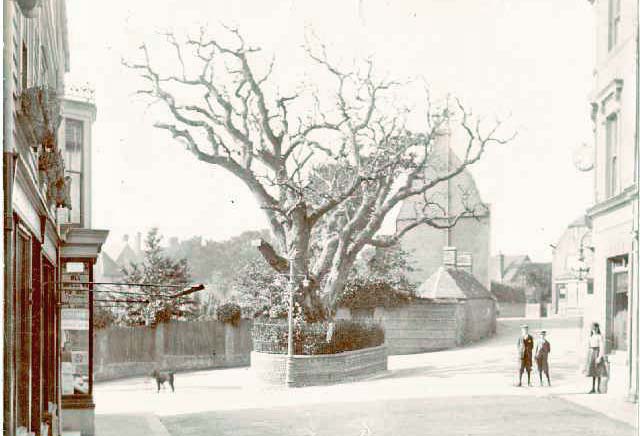
Bexhill Old Town Circa 1900.
Today, even when the homes are quiet and the hour is all wrong, a powerful and delicious aroma of home cooking pervades the street. Hungry motorists pull over to find the restaurant they are so convinced they can smell, but of course, they are 200 years too late.
Bexhill Museum
Not all ghosts harbour a vendetta. One friendly spirit is said to reside in Bexhill Museum, in Egerton Park.
The museum was established in 1914 by a group of enthusiastic experts. Nowadays, visitors can visit the motoring history area and peruse the archives of stuffed animals, silk flapper dresses and stone tools from Peru. They are free to wander around at their leisure.
Hence the surprise of many a visiting group, who are greeted by a passionate and knowledgeable guide. He describes and explains the items from the past as if it is the present, and the students who take notes from him end up achieving highly. When they return to the desk to give thanks to the guide, they learn that no tours were operating that day.
Perhaps it is true that enthusiasm cannot be killed. Could the guide be one of the dedicated founders, still determined to educate and entertain the young people of Bexhill 100 years later?
Article written by Becky Kleanthous and Alastair Hazell
Materials originally provided by Tina Lakin, along with input from other locals.
Your comments
I always love to hear your comments, so please feel free to comment below. Note that you can post without having a login - simply select the 'guest' checkbox.

